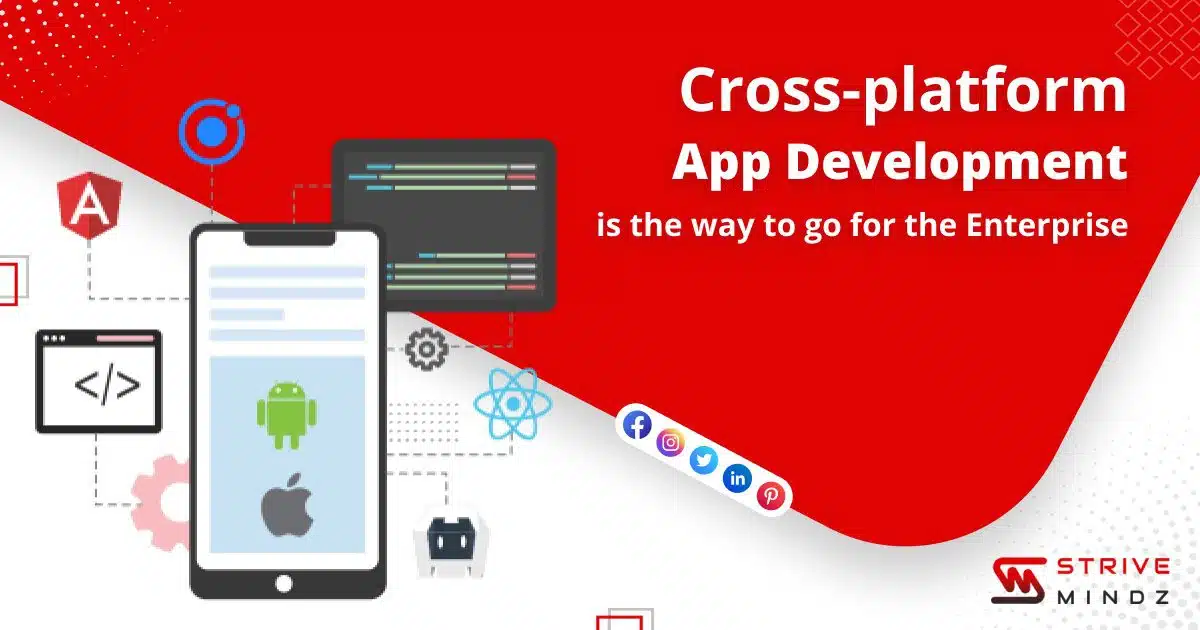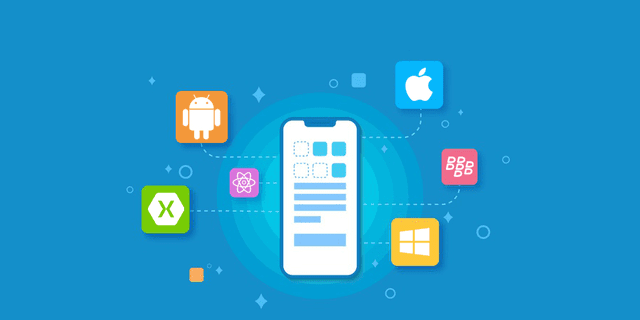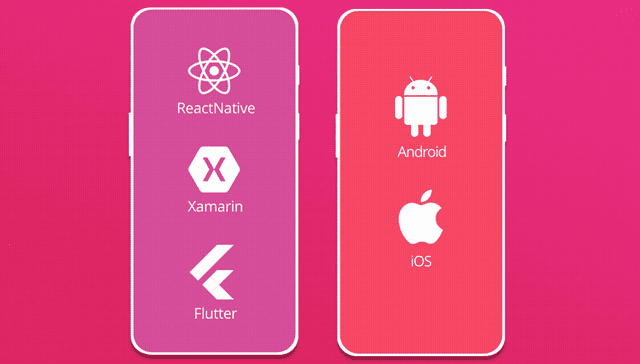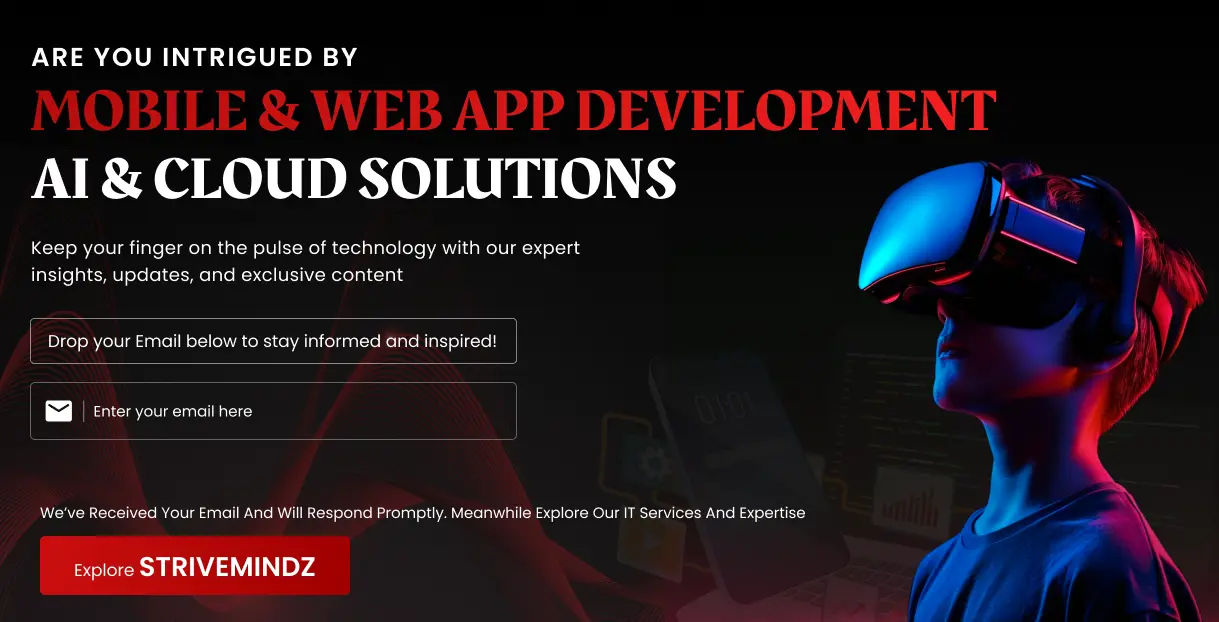Cross-platform App Development is The Way to Go for The Enterprise

In today’s fast-running world, the mobile app market is expanding exponentially, no business would risk missing its presence on either platform: Google’s Play Store, Apple’s App Store and Windows Market Place.
However, the major concern that businesses face is budgeting when going for native apps for each platform and that is where the cross-platform app enters. It allows developers to create mobile applications that are compatible with more than one operating system, in this case, iOS and Android.
Cross-platform applications provide the ability to run a single code on any platform and thus enable a faster release of the product/software with better quality.
Table of Contents
Native Vs Cross-platform Applications Development
Appstore and Google Play have 4.4 million apps available, targeting 14 billion mobile phones worldwide. One of the most important decisions you have to make when developing a mobile app is to choose between native and cross-platform mobile Application development.
The choice of one or the other has long-term implications in terms of cost, time, and functionality.
Although it is a constant debate that has kept the community divided for years. Some experts still favour native over cross-platform while on the other hand, companies like Uber are coming up with their cross-platform framework to rewrite their driver app. We’ll explore both options and weigh the pros and cons of each in this article.
Here are some noticeable differences between native and cross-platform applications:
- Cross-platform applications cost relatively less than Native applications.
- In cross-platform applications, a single code can be used for multiple platforms whereas in native applications a single code works for a single platform.
- Cross-platform applications have a limited consistency with the UI components of the device whereas native applications are consistent with the UI components.
- Cross-platform applications are high on performance but face hardware compatibility issues whereas native applications have a seamless performance.
Benefits of Cross-platform Applications
-
Code Reusability
The biggest upside that hybrid app development offers is the reusability of code. Since a single code can be used over multiple platforms, it saves a lot of time and effort.
-
Wide Market Reach
Hybrid apps have a wide market reach and offer a shorter time to the market. Also, it saves a lot of market efforts as the app is available on multiple platforms.
-
Cloud Integration
Integrating into the cloud environment is easy with the cross-platform applications as they offer universal compatibility.
-
Consistency
Cross-platform applications are consistent as they offer the same interface over every platform and also they yield compatibility with the UI components of a device.
-
Cost-Effective
It is comparatively much cheaper than native applications because here a single code needs to be developed for multiple platforms whereas in a native application, different platforms demand different code.
Basic Steps Involved In The Development of a Cross-platform Application
Step 1: Choose a Development Tool for Your Application
The market is filled with several development tools but it’s on you to choose the best one for your needs and purpose. Here are some of the best development tools available in the market.
- Xamarin (Cherished by developers, entrusted by the enterprise)
- ReactNative (Learn once, use anywhere)
- Flutter (Excellent native interface in no time)
- Adobe PhoneGap (Build astounding mobile applications)
- Ionic (lightning-fast speed)
Step 2: Design
For rendering a unique user experience it is important to address the needs of diverse platforms and UI guidelines. Before building the app it’s better if the developer is familiar with how the app operates on each platform so that they do not have to face any troubles later. Also having a deep understanding of how to navigate the cores of the platform to ensure it is handy enough is crucial.
Step 3: API Services
The straightforward approach for medium-scale projects is to use a single API to deploy platform-specific mobile applications for iOS, Android and Web, however, this approach might result in bottleneck problems. It is better if the developers tailor an API service to the specific requirements by decoupling the API from other existing API services.
An approach known as dedicated API service can be established by exposing a set of related functionalities to the backend, with this approach developers can change the backend API independently. It also enables developers to break the interdependence between team and product.
Step 4: Divergence over Multiple Platforms
Divergence doesn’t always mean cross-platform, sometimes it’s about different capabilities and features of devices on the same platform like the screen size.
Some of the platform-specific attributes:
- Screen Size
- Keyboards
- Touch and Gestures
- Push Notifications
Some of the device-specific attributes:
- Camera
- Geographic Location
- Social Media
- Near Field Communications
Step 5: Testing and Approvals
Testing is a critical step in your process towards developing an app, it is better to ensure your app has been tested over various dynamics and situations before it reaches the market. Testing has to be done over a wide range starting from developer-level unit testing to beta testing across a variety of hardware.
Approvals, on the other hand, might take up to a few weeks and are not very transparent, there is limited feedback on the progress until the app is rejected or approved.
Apple’s Appstore and Microsoft’s Marketplace both lock down their devices and implement a meticulous app review process to maintain quality. Whereas Google’s Playstore and Amazon’s Appstore for Android are widely available and have no review process.
Final Insights
Now that the world is divided basically into two categories, i.e. Android and iOS, cross-platform application development is expected to gain a huge mileage and experience a boom in demand. There are several cross-platform app development tools available in the market now and just all of them can cover Android, iOS and Windows app development.
The question is which cross-platform app development tool is the best? Well, it simply depends.


